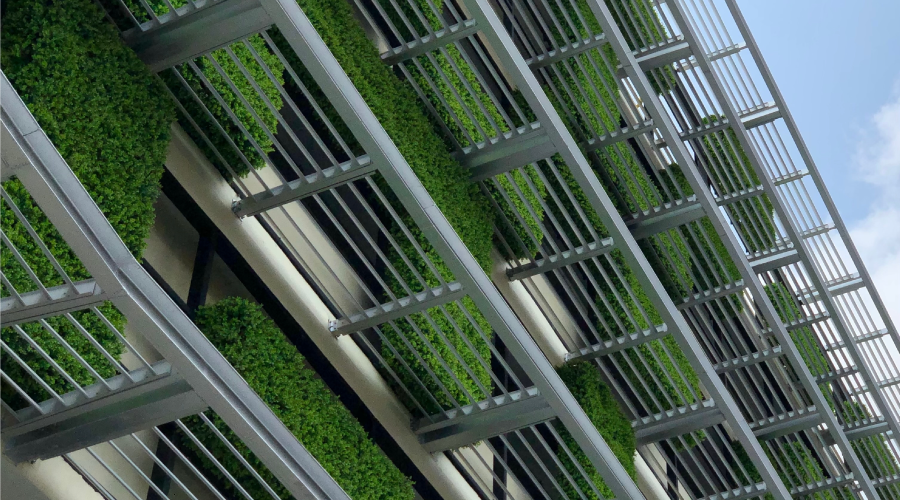Earth Friendly, Energy Efficient
Guided by maintenance, the Hyatt Regency Boston upgrades key areas and systems, incorporating new technology to control energy use and minimize its environmental impact
The engineering department at the Hyatt Regency Boston is no stranger to facility renovation. Since the 501-guest-room hotel opened in 1985, it has undergone two major renovations.
The hotel’s latest renovation, finished in January, features a blend of aesthetic changes and new technology, including new furniture, wall coverings, paint, carpet, lighting and plumbing fixtures, as well as enhancements to the HVAC system.
The hotel’s renovation team made a concerted effort to incorporate water- and energy-saving technology to satisfy a certain type of guest.
“There are a lot of people that won’t stay at a hotel that isn’t environmentally friendly,” says Brian Gorski, the facility’s director of engineering. He served on the renovation team, along with the hotel’s general manager, the general contractor and several other managers. But besides enhancing guest satisfaction, the energy-efficient technologies also help to minimize utility costs.
Temperature Control
Providing guests with better comfort in the rooms was one goal of the renovation. To achieve this, the team added a remote temperature sensor in the center of each guest room, enabling the HVAC system to provide a more even temperature.
In a typical guest room, HVAC units are stacked in front of windows. Because the thermostat measures temperatures near the outside wall, short cycling is often a problem; the system doesn’t properly cool or heat the entrance area.
“We added a sensor close to the entrance so the system creates a nice blanket of air all the way up to the doorway,” Gorski says. “Now, when the guests walk in, they immediately feel the cooler air. During the winter, the room feels warmer. It improves the whole comfort of the guest’s experience.” The addition of the sensor also eliminates the short-cycling problem.
“When I set the thermostat on the wall next to the window at 68 degrees, I know it is not going to shut off until the other sensor is satisfied at 68 degrees,” Gorski says. The sensors are part of the facility’s building automation system, which is connected to the front desk’s reservation system. When guests check into the hotel, the system automatically enters occupied mode. From the time the front desk checks the guests in, it takes about 18 seconds for the system to turn on the air conditioning or heat, eliminating unnecessary run time.
The system features occupied temperature control points, allowing guests to turn the system on and off and control the temperature within a range. If a guest shuts off the thermostat and leaves the window open, the unit will recognize when the temperature drops to 50 degrees and will automatically turn on the heat so the room doesn’t freeze. Gorski avoids setting the control system’s parameters too tight in order to keep energy costs low.
“When you begin to see the savings, you begin to get a little greedy and play with the set points a little bit more,” Gorski says. “We used to have very tight parameters that only allowed guests to adjust the temperature of their room between 68-74 degrees. But they didn’t like that. So now we have a big swing from 80 to 60 degrees. No one seems to have a problem with that temperature range.”
The engineering department can monitor the facility’s more than 4,000 control points through its energy management system (EMS). When technicians receive a service call concerning a room’s systems, they can view the unit’s control points remotely to determine whether the fan is running, the unit is heating, and discharge air is the proper temperature.
“They know what the problem is even before they get to the guest room,” he says. The hotel’s EMS has been improved since its installation with the addition of new technology.
“After the base systems are in place, through software enhancements, changes in thermostats and the addition of sensors, you can benefit even more,” he says.
Energy-efficient Lighting
The renovation team also realized the hotel could significantly reduce its use of electricity by replacing incandescent lighting in the guest rooms with compact fluorescent lamps. Instead of three 60-watt lamps, bathroom lights now feature twin wall sconces with 20-watt compact fluorescent lamps. The team also replaced the 100-watt table lamps with 27-watt compact fluorescent lamps. Even though they only use one-third the power as incandescent lamps, the new lamps provide more light.
“We gave some students a tour of the building,” Gorski says. “We showed them one of our floors after it had been renovated and one that wasn’t renovated yet. We asked them to look at the lighting and tell us which one they thought was using more power. They picked the newer one.” The students chose the renovated area because fluorescent lamps provide much whiter light and give the appearance of using more power, he says. The new lamps also last much longer than incandescent lamps.
“Standard 100-watt light bulbs give you about 750 hours, and we typically would buy long-life light bulbs that last about 2,000 hours,” he says. The compact fluorescent lamps last about 10,000 hours, making the life cycle about two years in a guest room.
Other energy-saving lighting improvements included adding motion-detector light switches in all storage and meeting rooms and switching from T12 lamps to T8 lamps in about 85 percent of the hotel’s back-house lighting.
Water Conservation
The renovation also focused on water-saving technologies. The team installed new six-nozzle showerheads in all guest rooms. With higher water pressure and improved spray capabilities, the fixtures provide 21/2 gallons per minute (gpm), which is the minimum to ensure guest satisfaction.
“The guests tend to frown on it when you steal too much water,” Gorski says. For the bathroom faucets, the team switched from 2.5 gpm aerators to 2.0 gpm aerators.
“I tried stepping down to 1.8 gpm, but that was a little bit too much,” he says. “When the guests are paying for a quality room, you can’t get too greedy with your water savers.”
Prior to renovating the guest rooms, the hotel already made efforts to conserve water by switching from water-cooled to air-cooled ice machines and kitchen refrigeration units. Each water-cooled ice machine had been using 100-150 gallon daily.
“The air-cooled machines can be a little bit noisier at times, but you’re not wasting water any more,” Gorski says.
The next water-saving technology the hotel is incorporating is an ozone water system in its laundry area, which oxygenates water to create bubbles. Bubbling action helps remove stains and soils from linen. The system enables the hotel staff to use less water during washing cycles.
“For instance, in large washing machines such our 480-pound machines, we maintain a 12-14 inch water level in the tub,” Gorski says. “With the ozone system, we only need to maintain an 8-inch level.” He says the average washing cycles without the ozone system use about 900 gallons.
“Now, we only use about 600 gallons of water and wash the same amount of clothes,” Gorski says. Because the ozone reacts the same in hot and cold water, less hot water is needed. With the system, less soap and bleach is needed, increasing the longevity of linens, which tend to deteriorate faster when washed with bleach.
Keeping Costs Down
Gorski carefully tracks the hotel’s utility bills. When he considers different technologies the hotel might want to incorporate, he looks for long-term savings.
“Over the last five to six years, we invested close to $1 million in our control system,” he says. These investments have helped tremendously in minimizing the hotel’s energy load.
“When I started here in 1993, our total electricity use was about 1,400,000 Kilowatt hours in about a month,” he says. “We were able to drop that to 875,000 after the first year we installed our control system.”
Keeping utility costs down is especially challenging when utility rates continue to rise. When other hotel managers don’t see a decrease in utility costs, they might question the effectiveness of the organization’s energy-saving efforts.
“We’re doing much more business than we did five years ago and using the same amount of power,” he says. “Utilities are high, but it’s not because of energy usage. We’re paying 7.2 cents a Kilowatt right now,” adding that the Hyatt had been paying less than 5 cents a Kilowatt a couple years ago. The hotel uses primarily electricity and plans to spend $1.5 million this year for electricity.
“I’m constantly looking for ideas to minimize our energy use — through trade magazines and talking with energy consultants,” he says.
To become more energy efficient, the hotel is in the process of becoming ENERGY STAR® rated and hired an engineering firm that specializes in energy-conservation projects to help in achieving this goal.
Through these energy-saving initiatives and environmentally friendly practices the hotel hopes to act as an example to for other Hyatt hotels and set a standard within the hotel industry.
Related Topics:











